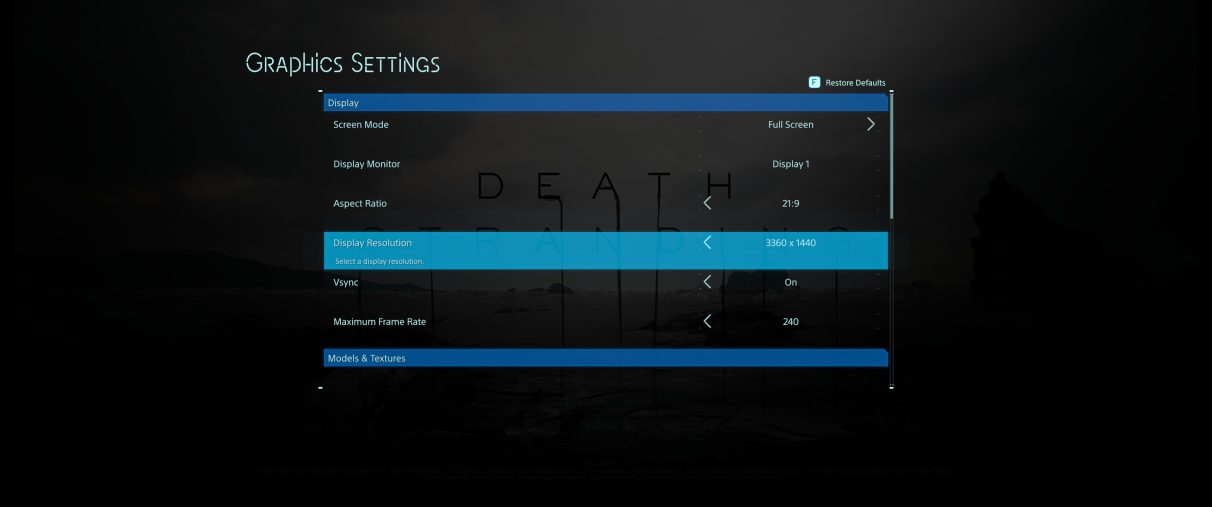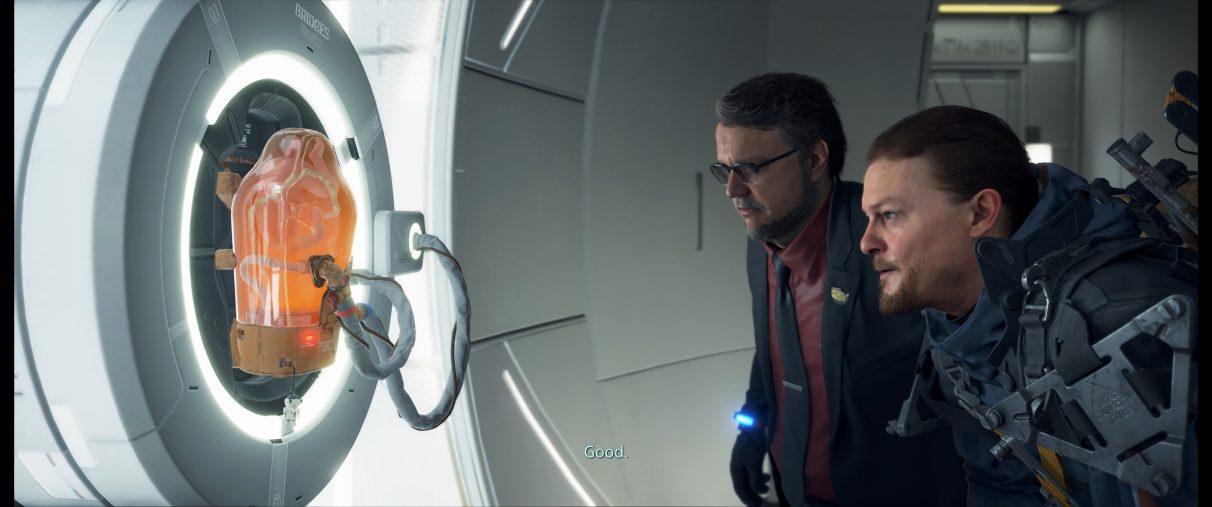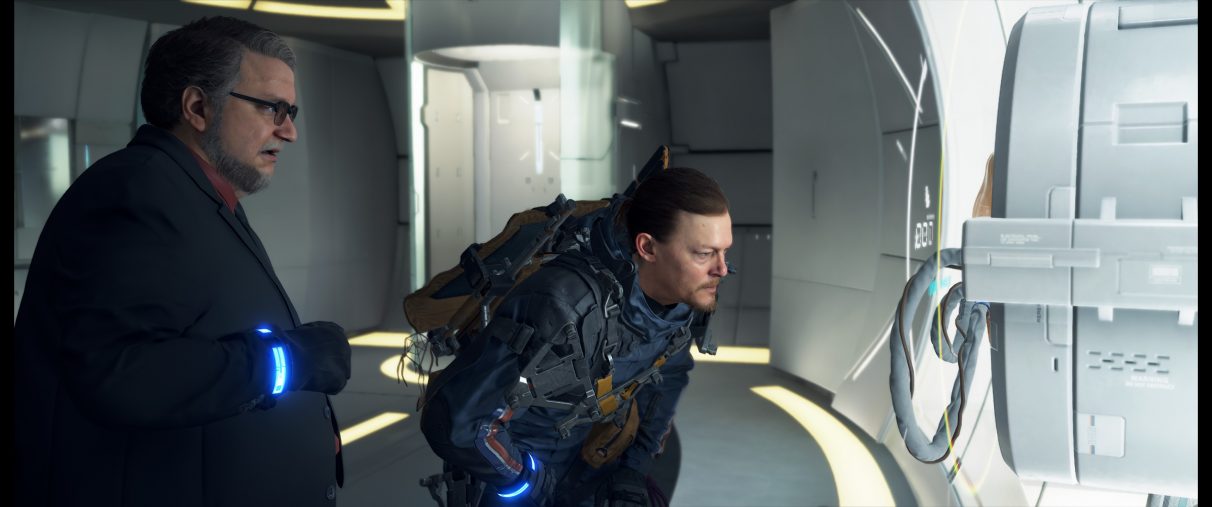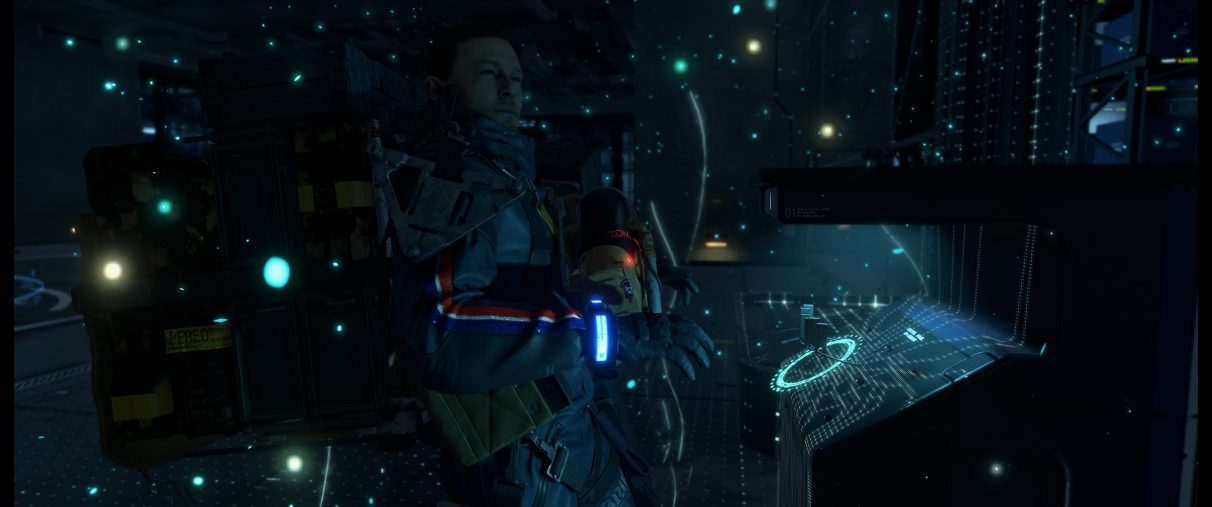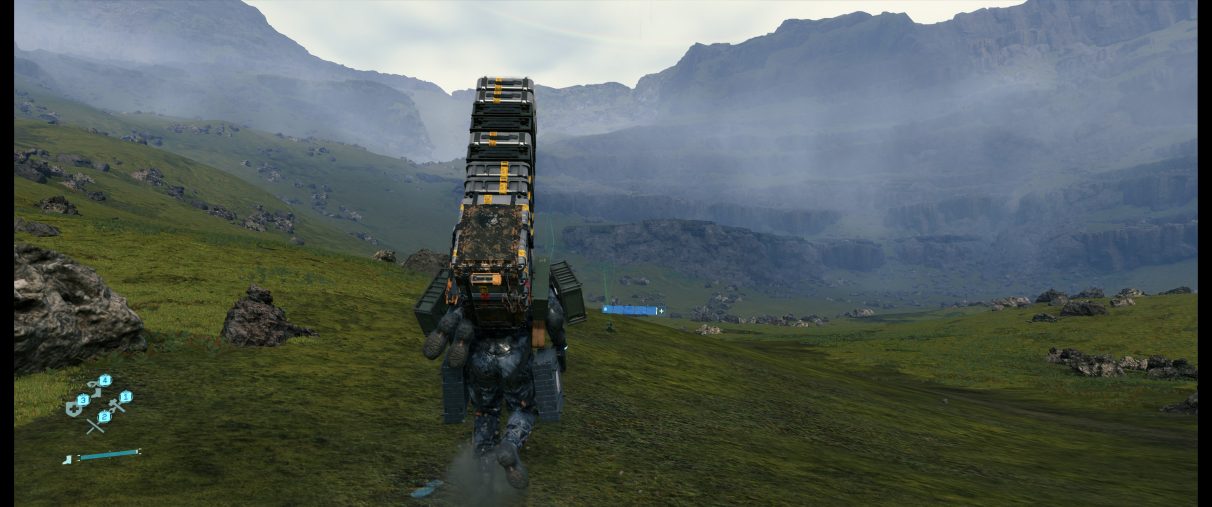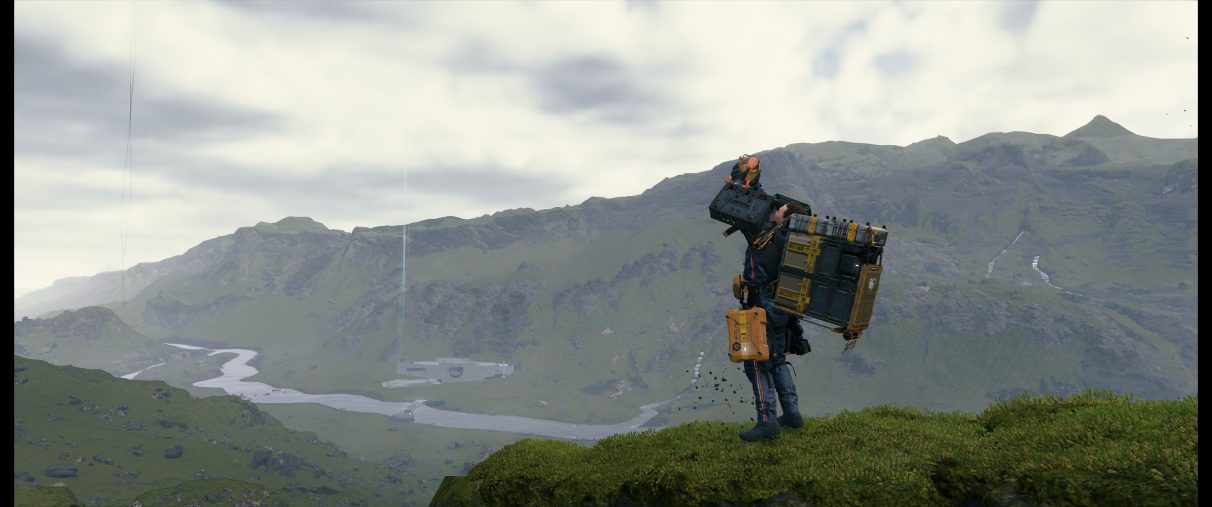To help me test Death Stranding’s ultrawide monitor support, I’ve got in Asus’ ROG Swift PG35VQ to take it for a spin, and the results are pretty darn stunning. The monitor itself is Asus’ ultra-fancy 35in, 3440x1440, curved G-Sync Ultimate screen - their answer to AOC’s Agon AG353UCG for a bit of added context, and I’ll be writing up a separate review of the PG35VQ in the coming weeks. The good news is that you don’t need a super duper screen with all the G-Sync bells and whistles to get the most from Death Stranding’s ultrawide support, as it’s just the 21:9 aspect ratio that’s the key ingredient here. So let’s take a closer look at Death Stranding’s ultrawide wilderness, which is even more beguiling in 21:9 and a real treat for the old eyeballs. I mean, Kojima’s Icelandic-flavoured post-apocalypse is already one of the most stunning game environments of 2020 on PC, but they look even more majestic when they wrap around your entire peripheral vision. Just have a look at these GIFs to see what I mean. Of course, the eagle-eyed among you may have spotted that there are some tiny black bars on the edge of those GIFs, and that’s because despite having a specific 21:9 aspect ratio option in the game’s Graphics Settings menu, the only available resolutions the game gives me are 3360x1440 instead of the monitor’s full resolution of 3440x1440 (or 2520x1080 instead of the usual 2560x1080 if you drop it down a notch). That’s with the correct graphics drivers installed and the recent patch, too. It’s a touch disappointing, to say the least. But remember, this is Hideo Kojima we’re talking about here, a man known for his love of traditional cinema, so of course those resolutions are entirely deliberate. Just like 3840x2160 isn’t technically ’true 4K’ (that’s 4096x2160, in case you weren’t aware), 2560x1080 and 3440x1440 resolutions aren’t ’true’ 21:9, either. That’s just the particular set of numbers used by gaming displays to help put them in the context of other, more traditional 16:9 resolutions, and proper cinematic 21:9 (or 7:3 if you want to get real technical about it) is, yep, you guessed it, 2520x1080 and 3360x1440. And if you don’t believe me, try it out for yourself with this aspect ratio calculator and select the Cinemascope 21:9 option. So yes, Kojima being Kojima, he did, in fact, include true 21:9 support - just not the 21:9 support any one was actually expecting. Still, in the grand scheme of things I found it really wasn’t that noticeable. It helps, of course, that the PG35QV has super slim bezels that naturally blend into the main display, so for me it was just there was a vaguely thicker black line running around the edge of the screen. I can see it being more of an annoyance for people whose monitors have big, bulky, plastic bezels, though, as here it would be a lot more obvious that the game doesn’t extend to the very edges of the display. Still, while we can’t do much about the loss of 80 pixels on either side of the game’s edges, the good news is that Death Stranding doesn’t do a Red Dead Redemption 2 and cut back to a 16:9 aspect ratio for any of its cutscenes. Instead, Kojima Productions have re-tooled each and every one of them to support the 21:9 aspect ratio, and in a lot of cases even created new details to fill in what was previously missing on the sides, too, according to their Summer Games Fest interview, which is really quite something when you see it in action. Indeed, there were several moments when I was playing Death Stranding over the weekend where I almost couldn’t believe these were originally 16:9 cutscenes, as the spacing between certain characters just looked perfectly suited to an ultrawide display. Just have a look at some of these screens below. When Sam Bridges and Guillermo del Toro (aka, Deadman) inspect their newly acquired BB, for example, the way they’re positioned in the cutscene really seems to be making the most of the ultrawide aspect ratio, with both of them appearing at the far edges of the screen rather than being shuffled toward the centre. Normally, ultrawide support is all about seeing extra stuff around the edges of the main action, but here it’s like those original 16:9 seams have completely disappeared, resulting in a game that really does look and feel like it’s made for this particular aspect ratio.
That’s a nice feeling to have if you’re a fan of ultrawide monitors, and it all adds up to make the PC version of Death Stranding feel extra special. Best of all, though, is that its ultrawide resolutions don’t make the UI a pain in the ass to use, either, which is another leg up it has over Red Dead Redemption 2. Admittedly, I was playing Red Dead on the honking great Samsung CRG9, which has an even wider 32:9 aspect ratio, but the fact Rockstar put its mini-map and context-sensitive control HUD in opposite corners of the screen still meant that I was moving my head backwards and forwards every five seconds to make sure I was pressing the correct buttons.
Death Stranding, of course, doesn’t have a mini-map to get in the way of anything, and its controls are a lot more intuitive by default. In fact, the only bit of death Stranding’s onscreen UI that I’ve ever found myself looking at its footwear bar, which sits underneath the face button / 1-4 hotkeys in the bottom left corner. And even then that’s only very rarely.
Instead, the game itself is your mini-map, and the extra breath afforded by the ultrawide aspect ratio makes it even easier to get a lay of the land. You can see more dropped cargo when you ping your scanner across the landscape as well, and you’ve got a wider field of view for spotting rogue MULE enemies and those pesky BT ghosts when it starts to rain, too.
And yes, peeing off the edge of the mountain feels immensely more satisfying as well.
Plus, when Death Stranding’s PC performance is so gosh-darned excellent anyway, you also don’t need a particularly beastly graphics card to make the most of its ultrawide support. My RTX 2070 Super, for example, was quite capable of hitting a very smooth average of 70-odd fps on the game’s top Very High setting at 3360x1440, and enabling its DLSS 2.0 support made it shoot up even higher, so anyone with an RTX 2060 or RX 5700 or above shouldn’t have much trouble getting it up and running - which, again, is more than can be said for Red Dead Redemption 2.
All in all, then, Death Stranding is a real treat in ultrawide, despite the Kojima’d resolution settings. The game itself really benefits from that broader perspective as you survey the gorgeous landscape around you, and its cutscenes aren’t constantly reminding you that this was once a PS4 game, either. Plus, its rather excellent photo mode also supports the 21:9 aspect ratio, allowing you to create true comedic masterpieces like this:
It’s also got me really excited about what Horizon Zero Dawn’s ultrawide support will entail when it comes out on August 7th, too, wot with both games being based on the same engine and all that. While I’m not expecting Guerrilla Games to go quite as far as Kojima Productions with the whole ‘recreating every single cutscene for 21:9’, here’s hoping it will be just as easy to run at 21:9, and that its photo mode will also let me take stupidly long shots of its giant cyber dinos.
